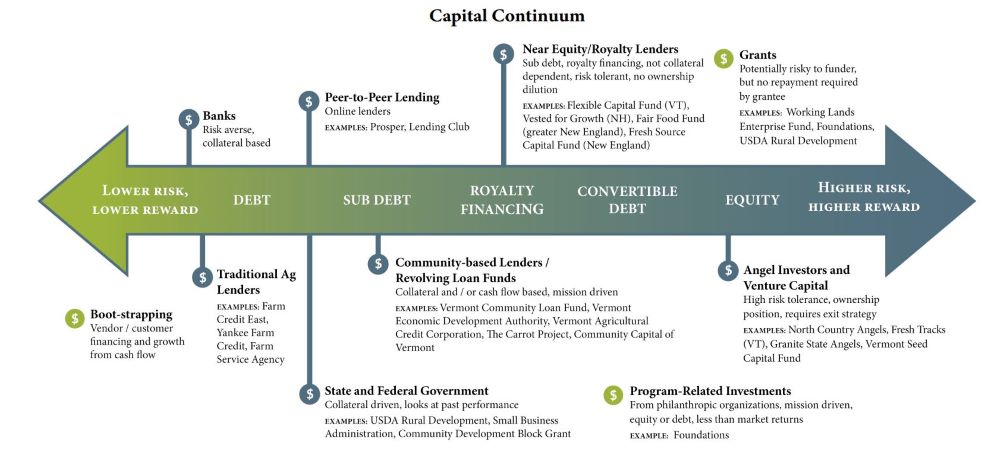
Properly capitalized farms and food businesses are critical for a healthy food system. Food system businesses need different kinds of capital depending on their stage of growth, scale of operation, and the markets into which they sell. In part due to the aging of our population, Vermont is experiencing an unprecedented generational transfer of farmland and food businesses. We need to develop new business models, and support access to affordable farmland for new and beginning farmers and young entrepreneurs to take over food businesses, all of which require significant capital and business acumen for success. Critical to this process is connecting the next generation of values-driven investors with opportunities to support farms, food producers, and food system businesses, through a variety of capital provider organizations and through programs that educate new investors.
Strengthening the state and regional food system is one of the most important paths for broad and sustainable wealth creation in rural communities, yet Vermont farm and food businesses are forced to rely on a more limited financing landscape than businesses in other sectors.
There is a deep interrelationship between matching the right kind of capital with the right capital structure and provider, as well as individuals and/or networks that can provide that capital.
Capital can take many forms, as shown in the capital continuum diagram. Financial capital can be structured as debt, equity, grants, and more. The maturity of different types of businesses within the food system can impact access to capital, as well as dictate the form of capital that is most suitable. For instance, for food manufacturing businesses that are growing or pivoting their business and expanding facilities and/or distribution, there is often a lag time between when investments are made in a new facility or equipment and when revenues are generated from that investment. This leads to cash flow challenges as the business grows and requires additional working capital that is patient and flexible.
From 2008 - 2018, a suite of new and diverse forms of capital have become available to Vermont farm and food businesses. Alongside the growth in Yankee Farm Credit and Vermont Agricultural Credit Corp (VACC) portfolio of loans over the last decade, new lending programs, such as the Vermont Community Loan Fund’s (VCLF) Food, Farms & Forest Fund, have been developed. The advent of crowdfunding, complemented by the changes to the Vermont Small Business Offering Exemption, have allowed food system businesses the ability to seek capital directly from individual investors. One example is Milk Money Vermont, a platform for businesses to raise capital from Vermont investors in amounts and at a scale that are accessible to the full range of individual investors.
The Vermont Working Lands Enterprise Fund is another example of an important new source of capital, providing grant funding to strengthen and grow the businesses connected to Vermont’s working landscape. Since its inception in 2012, the Fund has distributed over $5.3 million to 184 agriculture and forestry projects.
For a full Farm and Food Enterprise Financing Inventory of Capital Providers, see vtfarmtoplate.com/resources/food-system-financing-inventory.

